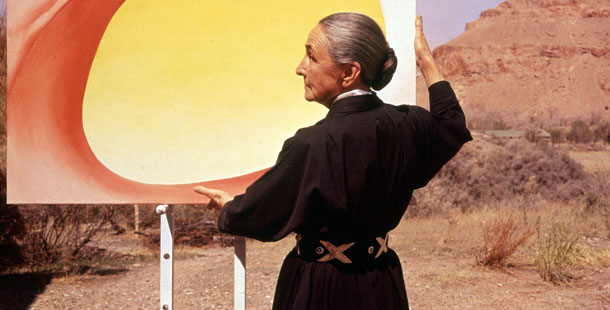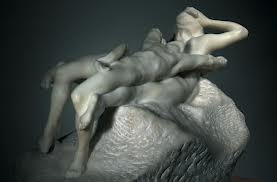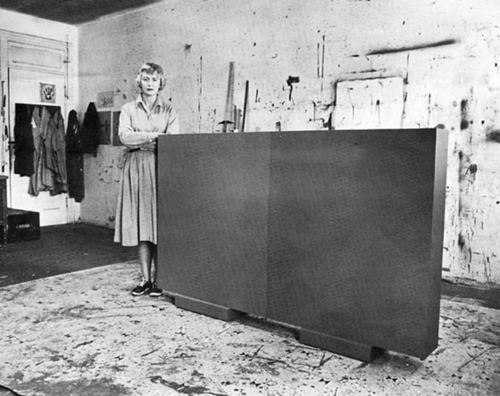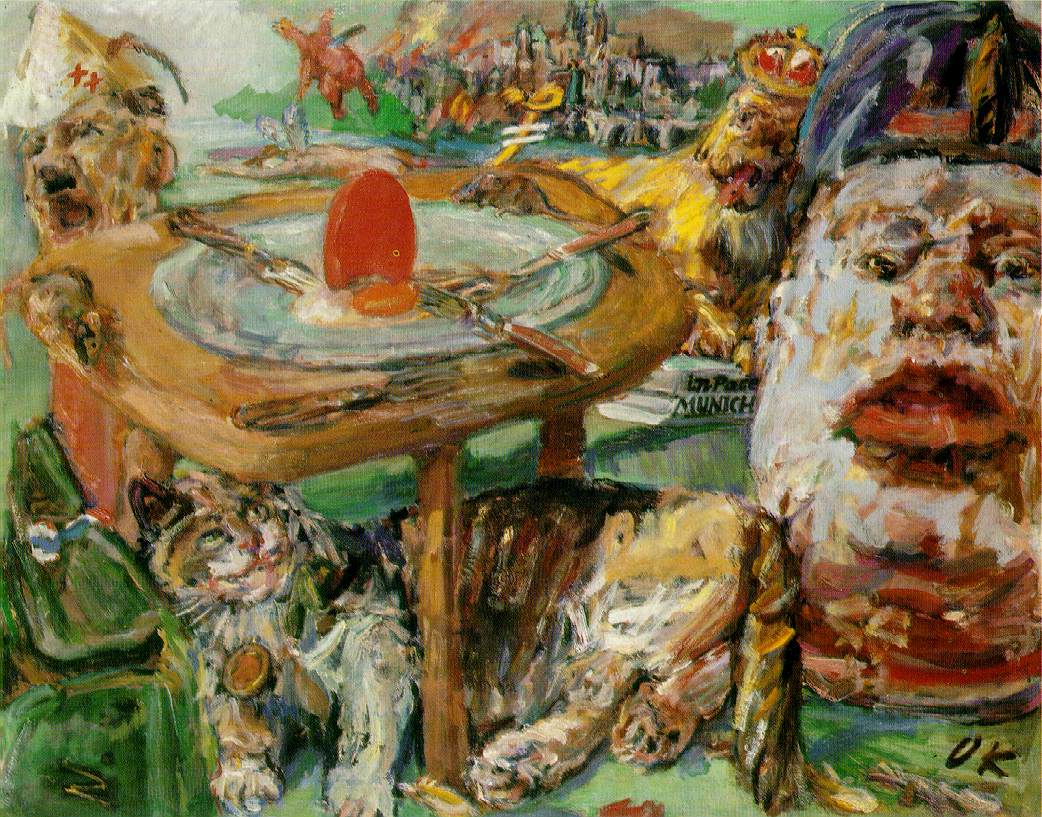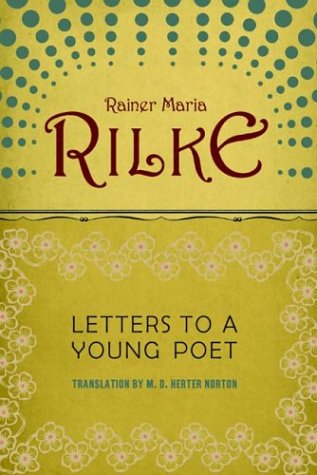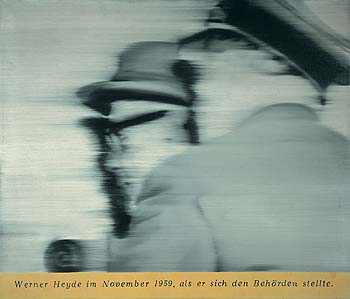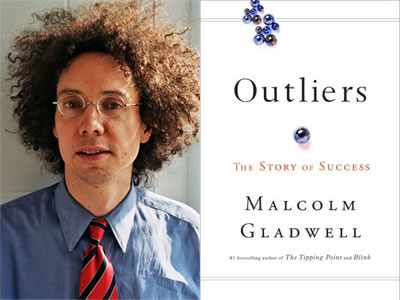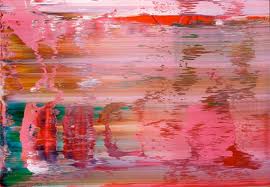Omphaloskepsis Blog
The [IN]complete artistŌĆÖs library: what you need to work, live and grow.
May 1, 2013
┬Ā
Art is the human disposition of sensible or intelligible matter for an esthetic end. James Joyce, A Portrait of the Artist as a Young Man
By and for artists, book recommendations based on experience. This list is comprised of books that have helped us, inspired us, influenced us, had an impact on us. It is both my recommendations and the response to a poll I put out to my friends.
As you will see, biographies inspire! We cross disciplines. A great manyŌĆöI would venture to say the majorityŌĆöof the struggles of writers and actors and musicians and visual artists are the same.
In it I list my recommendations in each category and then the recommendation of my colleagues. IŌĆÖm sure I did not do the best job of categorizing the books. Some of the Writing books could go in the Business section, some of the Philosophy could go in the Aesthetics section, and so on. Please forgive me.
I have tried to make it robust. I hope you have fun with this Bibliography and come back to it many times over to explore.
In-exhaustive expanding unfinished and ever-growing. What book has inspired you?
If you find yourself asking yourself (and your friends), "Am I really a writer? Am I really an artist?" chances are you are. The counterfeit innovator is wildly self-confident. The real one is scared to death.? Steven Pressfield, The War of Art: Break Through the Blocks & Win Your Inner Creative Battles
A special thank you to the friends and artists who participated in compiling this Bibliography including: Katie Augustyn, Zalman Berkowitz, Sean Capone, Mary Addison Hackett, Anna Hurwitz, Leland Leichman,┬ĀDan McComb, Ryan Molenkamp, Brenda L Scallon, Lynn Schirmer, Karl Stephan,┬ĀJack Strubbe, Betty Tompkins, Mark Tracy, and Suze Woolf
The artist is not a 'Sunday child' for whom everything immediately succeeds. He does not have the right to live without duty. The task that is assigned to him is painful, it is a heavy cross for him to bear. ŌĆöWassily Kandinsky, Concerning the Spiritual in Art
The [IN]complete artistŌĆÖs library: what you need to work, live and grow.
Aesthetics
Jack Strubbe recommends:
In Praise of Shadows; Junichiro Tanizaki; Leete'S Island Books; 1977
Amazon Description: ŌĆ£An essay on aesthetics by the Japanese novelist, this book explores architecture, jade, food, and even toilets, combining┬Āan acute sense of the use of space in buildings. The book also includes descriptions of laquerware under candlelight and women in the darkness of the house of pleasure.ŌĆØ
It is those who are successful, in other words, who are most likely to be given the kinds of special opportunities that lead to further success. ItŌĆÖs the rich who get the biggest tax breaks. ItŌĆÖs the best students who get the best teaching and most attention. And itŌĆÖs the biggest nine- and ten-year-olds who get the most coaching and practice. Success is the result of what sociologists like to call ŌĆ£accumulative advantage." Malcolm Gladwell, Outliers: The Story of Success
Biography
The Complete Letters of Vincent Van Gogh, Vincent Van Gogh; Bulfinch; 2000
At times IŌĆÖm tempted to sign my letters, ŌĆ£With a firm handshake,ŌĆØ if only I were sure the recipient would understand the reference. This is a hearty three volume set that is a must read for every artist. If you can, get a first edition for the illustrations.
Amazon: ŌĆ£The Complete Letters of Vincent van Gogh [ŌĆ”] (is) illustrated by the more than two hundred ink drawings the artist sketched into his letters. Most of the letters were written to the artist's brother, Theo, and it was Theo's son, Vincent, who acted as consulting editor for the publication.ŌĆØ
Amazon Review: ŌĆ£Van Gogh's letters offer tremendous insights into his life and works. Dr. Jan Hulsker (one of the world's foremost Van Gogh scholars) once wrote: "[His letters] enable us to know more about Van Gogh's life and mentality than we do of any other artist. The letters form a running commentary on his work, and a human document without parallel."ŌĆØ
Amazon Review: ŌĆ£Even for those not especially interested in Van Gogh's art, the letters are a striking, and sometimes painful, exploration of a man consumed with doubt, filled with compassion and profoundly troubled.
After more than 1,500 pages of Vincent van Gogh's letters a reader is exhausted by the struggles, arguments, and ultimate suicide of the creator of some of the most coveted paintings on earth, and yet elated by the triumph of art and family devotion over constant sorrow.
However depressing the life of Vincent van Gogh (1853-1890), his struggle is continually redeemed by lucid, analytical observations on art and artists as disparate as his black-sheep friend Gauguin, Manet, Degas, Japanese prints, and even the American illustrator Howard Pyle. He retains a touching certainty that his early hero, Millet, whose pictures of peasants so moved him, will prove to be the precursor of all that is progressive in art.ŌĆØ
Leland Leichman also recommends The Complete Letters of Vincent Van Gogh.
Interviews with Francis Bacon; David Sylvester; Thames Hudson; 1987
I go back to these interviews time and again. My copy is well underlined.
FB: Well, I think that there are lots of things. I think that one of the things is that, if you are going to decide to be a painter, you have got to decide that you are not going to be afraid of making a fool of your self. I think another thing is to be able to find subjects which really absorb you to try and do. I feel that without a subject you automatically go back into decorations because you havenŌĆÖt got the subject which is always eating into you to bring it back ŌĆöand the greatest art always returns you to the vulnerability of the human situation. And then too, to be a painter now, I think that you have to know, even if only in a rudimentary way, the history of art from pre-historic times right up to today.
Amazon: ŌĆ£Bacon's obsessive thinking about how to remake the human form in pain finds unique expression in his encounters with the distinguished art writer David Sylvester over a period of twenty-five years. In these masterfully and creatively reconstructed interviews, Sylvester has provided unparalleled access to the thought, work, and life of one of the creative geniuses of our century.ŌĆØ
Amazon Review: ŌĆ£He believes an artist must "solve the problem" of art to be a success, which to him means they must render the known through the unknown, or create the "illustrative" and "narrative" through the use of the "irrational."ŌĆØ
 Rodin: A Biography; Frederic V. Grunfeld; Da Capo Press; 1998
Rodin: A Biography; Frederic V. Grunfeld; Da Capo Press; 1998
The Agony and the Ecstasy: A Biographical Novel of Michaelangelo; Irving Stone; Signet; 1987
Zalman Berkowitz ┬Āalso recommends The Agony and the EcstasyŌĆöŌĆ£robust descriptions of the creative life of Michaelangelo.ŌĆØ
Mary Addison Hackett ┬Ārecommends:
Daybook: The Journal of an Artist; Anne Truitt; Scribner; 2013
I read it when I was first starting out.
"The diary of the well-known sculptor, begun by Truitt with the determination to come to terms with the artist in herself, dramatically documents the links between her daily life and her work"
┬Ā
Brenda L Scallon recommends:
Georgia O'keeffe: A Life, by Roxana Robinson. UPNE; 1999
Because you get insights like this from this- 'I get out my work and have a show for myself before I have it publicly. I make up my own mind about itŌĆōhow good or bad or indifferent it is. After that the critics can write what they please. I have already settled it for myself so flattery and criticism go down the same drain and I am quite free.' - Georgia O'Keeffe
 Anna Hurwitz recommends
Anna Hurwitz recommends
Portrait of the Artist as a Young Man; James Joyce; Dover Publications; 1994┬Ā Because, it's Joyce, a painter of words, and because the main characters description of realizing he can "see" is breathtaking.
┬Ā
Leland Leichman recommends:
Oscar Kokoschka's autobiography and Larry River's autobiography. Both have a nice way of showing how their art was part of their lives, in particular they were both kind of winging it and hustling.
My Life; Kokoschka Oskar; MacMillan Publishing Company; 1974
What Did I Do?: The Unauthorized Autobiography of Larry Rivers; Larry Rivers; Da Capo Press; 2001
┬Ā
Business
IŌĆÖd Rather Be in the Studio!: The ArtistŌĆÖs No-Excuse Guide to Self-Promotion; Alyson B. Stanfield; Pentas Press; 2011
How to Survive and Prosper as an Artist: Selling Yourself without Selling Your Soul; Caroll Michels; Holt Paperbacks; 2009
The ArtistŌĆÖs Guide: How to Make a Living Doing What you Love; Jackie Battenfield; DeCapo Press; 2009
Business and Legal Forms for Fine Artists; Tad Crawford; Allworth Press; 2005
How to Get Hung: A Practical Guide for Emerging Artists; Molly Barnes; Journey Editions; 1994
Confessions of a Public Speaker; Scott Berkun; OŌĆÖReilly; 2010
There are no great public speaking books, but this one is pretty ok and entertaining. ItŌĆÖs the best of the bunch. And learning public speaking skills is important for an artist. Better to get proficient before youŌĆÖre thrown into the fire.
┬Ā
Zalman Berkowitz recommends:
The Value of Art: Money, Power, Beauty; Michael Findlay; Prestel Publishing; 2012 An important perspective on the art world.
From Amazon: ŌĆ£What is art worth? How can a work by Pablo Picasso be sold for more than $100,000,000? This fascinating book explains the market for art--and art's value for all of us. In straightforward prose that doesn't mystify art or deny its special allure, prominent art dealer and market expert Michael Findlay offers a close up and personal view of almost a half century in the business of art. He engagingly explains art's three kinds of value: commercial; social; and what he terms its essential valueŌĆØ
http://www.artnews.com/2012/05/02/how-to-buy-sell-enjoy-have-an-aha-moment/
┬Ā
Catalog
Kate Vrijmoet: Essential Gestures: Roberts, Kany, Harris; CoCA; 2010
I recommend this because the essays in it are superb. And really, how could I have a blog about book recommendations without recommending my own? Check it out.
┬ĀWe need, in love, to practice only this: letting each other go. For holding on comes easily; we do not need to learn it. ? Rainer Maria Rilke, Translations from the Poetry of Rainer Maria Rilke
Criticism
The End of Art; Donald Kuspit; Cambridge University Press; 2004
KuspitŌĆÖs is not my favorite writer, I think his expression of ideas is untidy. That makes for a frustrating read for me because I find myself shooting holes in his arguments and he loses credibility for me. But I do think that this and DantoŌĆÖs book have to be read in conjunction with one another to put them in context. (still, I have to confess, I didnŌĆÖt get through the whole thing, I was too irritated)
Donald Kuspit argues here that art is over because it has lost its aesthetic import. Kuspit is a Contributing Editor at Artforum, Sculpture and New Art Examiner.
After the End of Art; Arthur C. Danto; Princeton University Press; 1997
I love Arthur Danto. HeŌĆÖs a brilliant man and a brilliant writer.
Art is still dead, according to Arthur Danto, professor at Columbia University and art critic for The Nation. After the End of Art: Contemporary Art and the Pale of History is a collection of Danto's 1995 Mellon Lectures on the Fine Arts. Famous for his radical critiques of the nature of art--he dates the death of art to around 1964 and declares the art museum has replaced the church for the masses--Danto continues to question traditional notions of aesthetics and philosophy in regard to contemporary art.
Air Guitar: Essays on Art and Democracy; David Hickey; Art Issues Press; 1997
This was a fun read.
Dave Hickey is one of today's most widely read art writers. He has written for Rolling Stone, Art News, Art in America, Artforum and Vanity Fair among others.
The Accidental Masterpiece: On the Art of Life and Vice Versa; Michael Kimmelman; Penguin Press; 2001
I couldnŌĆÖt put this book down.
Michael Kimmelman is an influential art critic. ŌĆ£The idea behind The Accidental Masterpiece is that art provides us with clues about how to ive our own lives more fullyŌĆ”about how creating, collecting, and even just appreciating art can make living a daily masterpiece.ŌĆØ
┬Ā
Betty Tompkins recommends the art critic Harold Rosenberg
RosenbergŌĆÖs books on art criticism include:
The Tradition Of The New 1994 Da Capo Press
Art on the Edge: Creators and Situations University Of Chicago Press; 1983
The De-Definition of Art (Phoenix Book) University Of Chicago Press; 1983
The Anxious Object University Of Chicago Press 1983
Saul Steinberg Alfred A. Knopf; 1978
┬ĀOnce a musician has enough ability to get into a top music school, the thing that distinguishes one performer from another is how hard he or she works. That's it. And what's more, the people at the very top don't work just harder or even much harder than everyone else. They work much, much harder. ? Malcolm Gladwell, Outliers: The Story of Success
Lynn Schirmer recommends:
The classic Ways of Seeing; John Berger; 1972 definitely had an effect. That was 30 years ago now!
┬Ā
Karl Stephan recommends:
The Painted Word; Tom Wolfe; Farrar, Straus and Giroux; 1975
Wolfe's book dismantles the bogus textual domination of visual art. It ain't about words or theory.
http://en.wikipedia.org/wiki/The_Painted_Word
┬ĀNo one questions the fact that verbal language has to be learned, but the common-placeness of visual experience betrays art; people tend to assume that, because they can see, they can see art. So in the end my ability to convey my experience of the sunrise would depend, first, on my having mastered an abstract language and, second, on someone elseŌĆÖs having mastered it too.ŌĆöAnn Truitt
Essays
A Brief History of Curating; Hans Ulrich Obrist; JRP|Ringier; 2008
I highly recommend this book
From Amazon: interviews by Hans Ulrich Obrist mapping the development of the curatorial field--from early independent curators in the 1960s and 70s and the experimental institutional programs developed in Europe and the U.S. through the inception of Documenta and the various biennales and fairs--with pioneering curators Anne D'Harnoncourt, Werner Hoffman, Jean Leering, Franz Meyer, Seth Siegelaub, Walter Zanini, Johannes Cladders, Lucy Lippard, Walter Hopps, Pontus Hulten and Harald Szeemann.
┬Ā
Zalman Berkowitz recommends For fun,
7 days in the Art World; Sarah Thornton; W. W. Norton & Company; 2009
Illustrates some of the machinery of this Art World thang. Enjoy!
┬Ā
Fiction:
Leland Leichman:
The Horse's Mouth; Joyce Cary; Faber and Faber; 2009
A fictional account on how to be a eccentric mid-20th century British down-and-out national treasure.
┬ĀYou take delight not in a city's seven or seventy wonders, but in the answer it gives to a question of yours. ? Italo Calvino, Invisible Cities
Sean Capone recommends:
Invisible Cities; Italo Calvino; Harcourt Brace Jovanovich; 1978
IC established a literary form for the conveyance of atmosphere & parable, without a narrative arc, which influenced me to stop thinking that art was something that had to tell a story
┬Ā
History
Color: A Natural History of the Palette; Victoria Finlay; Random House Trade; 2003
One of my favorite books. Riveting! History, romance, adventure and great story telling all rolled into one! I loved reading about indigo. Who knew?!
┬Ā
Instructional
Pedagogical Sketch Book; Paul Klee; (Nierendorf Gallery; 1944), Faber and Faber; 1968
┬Ā
Interaction of Color; Josef Albers; Yale University Press; Anv edition (May 6, 2013
A must have studio reference for every artist.
┬Ā
Zalman Berkowitz recommends:
101 things to Learn in Art School; Kit White; The MIT Press; 2011
Small notes about stuff we already know, but like to get reminded of.
┬Ā
Leland Leichman recommends:
Getting Things Done by David Allen
┬Ā
Motivational
Letters to a Young Poet; Ranier Maria Rilke; W. W. Norton & Company; 1993
┬Ā
Letters to a Young Artist; Anna Deveare Smith; Anchor; 2006
Defining artist broadly, Smith shares advice not only from painters, dancers, writers and actors but from a bull rider, a boxer and a dentist. Her advice is often directly practical: how to deal with stage fright, face an audition, even keep well ("Stay hydrated"). Smith treats concerns of the spirit as well: how to cope with disappointment, depression and feeling alienated. What emerges most persuasively is Smith's sense of the complex interrelationship between one's art and one's everyday life.
┬Ā
Lynn Schirmer Recommends:
The Artist's Mentor; Ian Jackman; Random House;
This book is for those of us who want to create art but do not know how to begin. Drawing on interviews and autobiographical writings of more than 100 famous painters, photographers, sculptors,
Ryan Molenkamp recommends:
Gerhard Richter: The Daily Practice of Painting; The MIT Press; 1995
Certainly one of my favorites
┬ĀAre you paralyzed with fear? ThatŌĆÖs a good sign. Fear is good. Like self-doubt, fear is an indicator. Fear tells us what we have to do. Remember one rule of thumb: the more scared we are of a work or calling, the more sure we can be that we have to do it.? Steven Pressfield, The War of Art: Break Through the Blocks & Win Your Inner Creative Battles
Both Katie Augustyn and Dan McComb recommend:
The War of Art; Steven Pressfield; Black Irish Entertainment LLC; 2012
if you have any resistance....
A cross between Sun-Tzu's The Art of War and Julie Cameron's The Artist's Way
Dan McComb: It helped me realize that a lot of stuff I thought was important - my endless quest for more and better equipment, for example - was actually just an insidious forms of what Pressfield calls "The Resistance" that keeps us from doing our work.
┬Ā
Suze Woolf recommends:
Art and Fear Observations On the Perils (and Rewards) of Artmaking; Ted Orland and David Bayles; Image Continuum Press; 2001
Early in the book they describe two classes - one where each student needed to produce 50 pieces to pass and the other where the students only had to submit one great piece at the end. You would not be surprised to learn that the better work came out of the class that had to do a large quantity of work. It generally demystifies inspiration in favor of perspiration, argues for faith in the process -- show up and do the work rather than agonize about whether you have "talent".
┬Ā
Leland Leichman's recommendations:
Zalman Berkowitz and Leland Leichman recommend:
The Artists Way; Julia Cameron; Jeremy P. Tarcher/Putnam; 2002
┬Ā
Zalman: Probably the best I am aware of. It's a workbook format, includes many tools to increase creative access and adapt those wild emotional swings we enjoy, yet are at times difficult to manage.
┬ĀIt wasn't an excuse. It was a fact. He'd had to make his way alone, and no oneŌĆönot rock stars, not professional athletes, not software billionaires, and not even geniuses ŌĆö ever makes it alone.ŌĆØ? Malcolm Gladwell, Outliers: The Story of Success
Mastery; Robert Greene; Viking Adult; 2012
Have you read this? It is a great collection of stories of artists' developments (really it's focused on the creative arts, but doesn't say so explicitly) and thoughts about what it takes to be a master at a given field. http://www.huffingtonpost.com/2012/11/15/mastery-by-robert-greene-_n_2126127.html ┬Ā
I was left wanting more thoughts about the 10,000 hour rule after reading Gladwell's Outliers; Little, Brown & Company; 2011, which is also good as an illustration of what are some of the elements that lead to people's success, but Mastery has more of the nuts and bolts, how-to about mastery, and listening to it I found it very encouraging that my hard work will pay off. It's a recommendation for you for sure as a cheer-leading, checking into the bigger picture stuff.
http://en.wikipedia.org/wiki/Outliers_%28book%29┬Ā
┬Ā
David Mamet wrote a great book for actors that I really liked as an exercise in minimizing the artist's existential dilemmas.
True and False: Heresy and Common Sense for the Actor; David Mamet; Vintage; 1999
┬Ā
Think and Grow Rich; Napoleon Hill; Tribeca Books; 2013
A classic how-to for long term dedication to a vision. It's like a manual for western bodhisattvas. West = wealth, east = enlightenment, but really it's about being righteous and true to your obsession, which is key to being an artist.
┬Ā
Philosophy
Concerning the Spiritual in Art; Wassily Kandinsky; Dover Publications; 1977
Rudolph Arnheim ŌĆöRevealing Vision; Kleinman/Van Duzer; The University of Michigan Press; 1997
ŌĆ£Rudolf Arnheim is one of this century's most influential thinkers in the visual arts, and perhaps the most lucid and accessible writer on the arts today. [ŌĆ”]The collection reflects on the scope, direction, and impact of Arnheim's work, through his own words as well as those of the contemporaries he influenced. The book includes an impressive array of essays, interviews, and tributes by internationally recognized artists, architects, and scholars, including art historian Vincent Scully, graphic artist Paul Rand, architect Daniel Libeskind, and writers and artists such as Gyorgy Kepes, Dore Ashton, and Sir Ernst Gombrich.ŌĆØ
To be naked is to be oneself.
To be nude is to be seen naked by others and yet not recognised for oneself. ? John Berger, Ways of Seeing
Anything by Rudolph Arnheim:
http://cabinetmagazine.org/issues/2/rudolfarnheim.php
Art and Visual Perception: A Psychology of the Creative Eye; Rudolf Arnheim; University of California Press; 2004
Visual Thinking: Thirty-Fifth Anniversary Printing; Rudolf Arnheim; University of California Press; 2004
The Power of the Center: A Study of Composition in the Visual Arts; Rudolf Arnheim; University of California Press; 2009
Put your foot upon the neck of the fear of criticism by reaching a decision not to worry about what other people think, do, or say. ? Napoleon Hill, Think and Grow Rich
Francis Bacon: The Logic of Sensation; Gilles Deleuze; Univ Of Minnesota Press; 2005
I go back to this book time and again. One of the books that has had the greatest influence on me, rich with concepts such as ŌĆ£The painting before the paintingŌĆØ and┬Ā ŌĆ£first you make the hand subservient to the eye so then the eye can become subservient to the hand.ŌĆØ
From an Amazon review: ŌĆ£Gilles Deleuze is one of France's most important philosophers, and in that role he has influenced many branches of the arts with his scholarly investigation of the subjects he chooses to investigate.
Deleuze here writes about the 'sensational' aspects of Francis Bacon's art, art which he knows well, living with several of Bacon's works in his home. His exploration of the inspiration of Bacon's various trademark strokes and subjects grows naturally out of his applying philosophical musings on visual subjects: this book is a thesis on aesthetics for which Bacon is simply but powerfully the nidus.ŌĆØ
┬Ā
Recently my friend Mark Tracy recommended to me Guerrilla Metaphysics; Graham Harman; Open Court; 2005
Amazon Editorial Review: ŌĆ£Harman takes a...creative approach to the phenomenological attitude to objects and how phenomenology can be reunified with the worldŌĆØ
┬Ā
Writing
The ArtistŌĆÖs Guide to Grant Writing; How to Find Funds and Write Foolproof Proposals for the Visual, Literary, and Performing Artist; Gigi Rosenberg; Watson Guptill; 2010
Very important book on art business and writing. A must read. YouŌĆÖll keep referring to this one.
Clutter and mess show us that life is being lived...Tidiness makes me think of held breath, of suspended animation... Perfectionism is a mean, frozen form of idealism, while messes are the artist's true friend. What people somehow forgot to mention when we were children was that we need to make messes in order to find out who we are and why we are here. ? Anne Lamott, Bird by Bird: Some Instructions on Writing and Life
Bird by Bird: Instructions on Writing and Life; Anne Lamott
Please! Learn to write your shitty first draft. Written with humor.
Now that we do not have priests and philosophers anymore, artists are the most important people in the world. . . . Art is wretched, cynical, stupid, helpless, confusing.ŌĆöGerhard Richte
On Writing: A Memoir of the Craft; Stephen King; Scribner; 2010
I loved reading this. Entertaining, informative and relevant regardless of what area of the arts youŌĆÖre in.
A Short Guide to Writing about Art; Sylvan Barnet; Pearson Longman; 2005
I have to admit, I havenŌĆÖt read this yet, itŌĆÖs one of those books that looks like a must have. IŌĆÖve skimmed it and read the TOC and IŌĆÖve read enough to know its going to come in handy. ItŌĆÖs pretty dense.
http://www.uiowa.edu/~writingc/writers/handouts/WritingAboutArt.shtml
equips students to analyze pictures (drawings, paintings, photographs), sculpture, and architecture, and prepares them with the tools they need to present their ideas in effective writing. This concise yet thorough guide to "seeing and saying" addresses a wealth of fundamental matters, such as distinguishing between description and analysis, writing a comparison, using peer review, documenting sources, and editing the final essay.
Once the realization is accepted that even between the closest of human beings infinite distances continue to exist, a wonderful living side by side can grow up, if they succeed in loving the distance between them which makes it possible for each other to see the other whole against the sky.ŌĆöRainer Mira Rilke, Letters
 MENU
MENU
